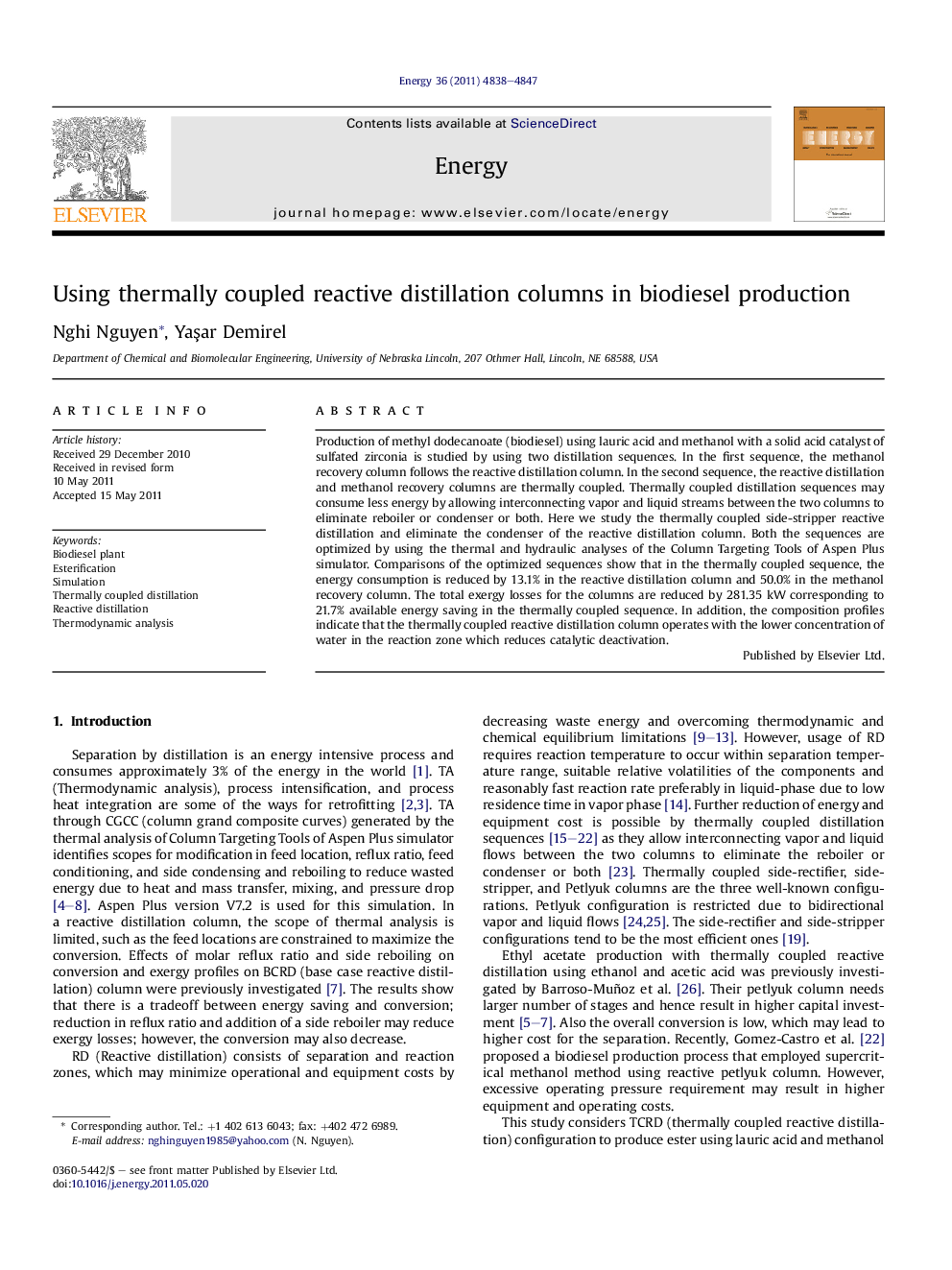| Article ID | Journal | Published Year | Pages | File Type |
|---|---|---|---|---|
| 1734249 | Energy | 2011 | 10 Pages |
Production of methyl dodecanoate (biodiesel) using lauric acid and methanol with a solid acid catalyst of sulfated zirconia is studied by using two distillation sequences. In the first sequence, the methanol recovery column follows the reactive distillation column. In the second sequence, the reactive distillation and methanol recovery columns are thermally coupled. Thermally coupled distillation sequences may consume less energy by allowing interconnecting vapor and liquid streams between the two columns to eliminate reboiler or condenser or both. Here we study the thermally coupled side-stripper reactive distillation and eliminate the condenser of the reactive distillation column. Both the sequences are optimized by using the thermal and hydraulic analyses of the Column Targeting Tools of Aspen Plus simulator. Comparisons of the optimized sequences show that in the thermally coupled sequence, the energy consumption is reduced by 13.1% in the reactive distillation column and 50.0% in the methanol recovery column. The total exergy losses for the columns are reduced by 281.35 kW corresponding to 21.7% available energy saving in the thermally coupled sequence. In addition, the composition profiles indicate that the thermally coupled reactive distillation column operates with the lower concentration of water in the reaction zone which reduces catalytic deactivation.
► The efficiency of column RD101 increases from 46% to 63%, while the total exergy loss reduces by 281.35 kW. ► In column T101, the reboiler duty decreases from 2136.23 kW to 1067.38 kW. ► The energy consumption reduces by 13.1% in the reactive distillation column and 50.0% in the methanol recovery column.
